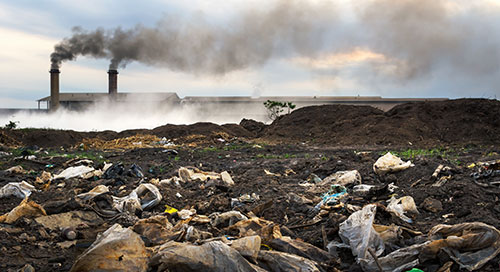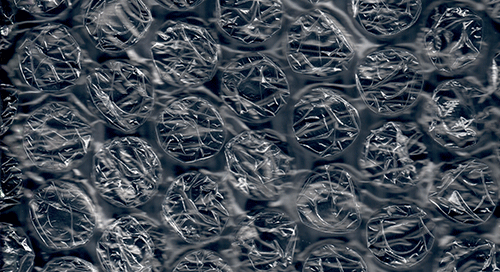sustainability-in-a-changing-world
“Now, here, you see, it takes all the running you can do to keep in the same place. If you want to get somewhere else, you must run at least twice as fast as that!” ― Lewis Carroll
Sustainability presumably requires very little adaptive effort to maintain production in a stable, predictable world. In this scheme, productions from human activities can go on as usual with no special concern on (i) their environmental impact, (ii) the availability of natural resources, or (iii) the possible short- or mid-term societal changes (fashion, healthcare, e-communication, or fast-lane consumerism in general).
special concern on (i) their environmental impact, (ii) the availability of natural resources, or (iii) the possible short- or mid-term societal changes (fashion, healthcare, e-communication, or fast-lane consumerism in general).
- Supposes that no marketed products (such as packaged food) are generated that exceed public needs or demand. Also, that no wastes are produced that cannot be biologically recycled in a natural manner for productive reintroduction.
- Connotes that biodiversity is not interfered with by massive exploitation of selective living or mineral resources.
- Means that humans accept to replace existing goods and services by less detrimentalor by equally sustainable improvements or novelties.
However, is sustainability possible in a changing world? The above quote from the writer/mathematician Lewis Carroll implies that any change in our daily routine requires some adaptive effort. To keep pace with the requirements of a constantly evolving world, multiple efforts must be made worldwide, especially where habits are modified at an accelerating rate.
From Science to Politics
“Listen to the scientists.” – Greta Thunberg (2019 address to the United States Congress)
The young Swedish eco-activist Greta Thunberg prompts deciders to listen and to trust the scientists who are able to take precise and unambiguous measurements of the key factors regulating the world climate. She repeatedly chastises the deciders—industry tycoons, lawmakers, and politicians alike—for their greed and hypocrisy in the face of the growing public awareness of climatic issues and pending biodiversity collapses.
Today, the level human interference is globally such that sustainability as a whole is indeed a utopia. Yet, there is room for specific changes that can accordingly help improve the livelihood of those directly concerned, without bringing existing consumption habits to dramatic change or a complete halt.
Creativity cannot be stopped; it simply needs to be better controlled when scaling up from experimental discoveries to full industrial production. Scientists are challenged to explore novel solutions to improve human health and welfare. Their discoveries are taken up by engineers to find practical solutions for their production, first at laboratory level.
Another adventure is initiated by business peoplewho can leverage funds and find investors and shareholders to gradually scale them up to full industrial production. Expanding production often requires political support for funding and for facilitating the establishment of production plants under optimal geographic and fiscal conditions. Employment is heralded by all parties as being beneficial to the local economy—an argument which incidentally prevails when relocation of existing operations is proposed for reducing production costs.
Under this scheme, sustainability requires that the chain of responsibilities between the multiple actors along the lines of production of goods and services is well established and that some visionary overview of the financial fluxes is implemented in an equitable manner. This is rarely the case, but it is not impossible to achieve with some goodwill by all parties.
Non-Living Natural Resources
“Currently, humans extract these (fossil fuel resources) at a rate about 1 million times the rate at which they were deposited in the lithosphere.” – Paul Falkowski & Yukio Isozaki, The Story of O2
Biogeochemists Paul Falkowsky and Yukio Isozaki insist on the accelerating rate of global warming directly linked to the exploitation of fossil fuels, relayed by Ugo Bardi(who explores realistic solutions exclusively relying on renewable energy sources). Global climate changes have occurred many times in the past, yet at rates that allowed some sort of adaptive response so that biodiversity can “reinvent” itself from the genetic stock of the microbial survivors.
This is certainly true for activities that directly or indirectly enrich our atmosphere with greenhouse gases, but it’s not the only concern. Specific solid minerals are generally exploited as if they were free to use and to discard when not reusable. Freshwater resources are not evenly distributed, are overexploited, and are often polluted chemically and biologically.
Sustainability in terms of availability of natural geochemical resources can, however, be improved by proper educational programs from the very early age to modify habits that are too deeply ingrained in contemporary adults. Water should be respected as a precious resource and its distribution be strictly controlled. Construction materials must be reused or recycled for different uses once replacement is needed. Wasteful production of consumables must not exceed public “quenching” capacity to simply keep production plants running. Storage space for excess merchandise can be put to better use. Global commerce and trafficking must be reorganized by regulating supply and demand aspects that are solely based on profit.
Natural Bio-Resources
“Marine biogenic molecules are used in a large variety of applications, industrial, medical, pharmaceutical, cosmetological, as food or associated to food, decoration...We live on a planet with finite resources, and our only problem now is to make them last for the benefit of the generations to come.” – Stéphane La Barre fromMarine Biodiversity and Chemodiversity: The Treasure Troves of the Future
Biological molecules are considered as small metabolites when associated with function and as macromolecules when involved with structure in living organisms. This simplistic classification is partially reflected in the various applications quoted above, but the sustainability of their production with regards to the biological sources is a common concern, irrespective of the rest.
Of primordial interest are the medical and pharmaceutical uses, as they represent the most debated of all applications directly derived from natural molecules, both marine and terrestrial. Metabolites of terrestrial plants have historically been the privileged source of drugs administered per os or as ointments. Animal and later microbial sources have been exploited as effective sources to complement the botanical therapeutic arsenal. Humans have only recently been aware of the extraordinary potential of marine molecules for the design of new drugs, cosmetics, and food complements. Well over 20,000 marine natural molecules have been studied since WW2, and several have responded to the need for novel anticancer, antibiotic, anti-inflammatory, or anti-pain agents.
The microbial and fungal components of the terrestrial rhizosphere and the associates of marine invertebrates (sponges, ascidians, corals, etc.) are now actively investigated as novel sources of drugs in the face of growing multi-resistance to clinically important bacterial pathogens. These are actively sought to build up extensive libraries of metabolites that can be used for screening of specific bioactivities. Tropical coral reefs shelter 20–30% of the overall marine biodiversity concentrated within less than 0.2% of the ocean’s surface, but very little of it will remain once the global air/sea average temperatures rise beyond 1.5°C. Most conservative estimates now point towards a 2°C rise by the year 2100. In fact, it is estimated that today a good third of the tropical coral reefs coverage has been lost in the last 30 years.
The rapid disappearance of high biodiversity ecosystems (e.g. tropical rainforests and coral reefs) or of highly climate exposed environments (e.g. polar ice covers and subpolar tundra and taiga) is bound to result in sudden and massive collapses in macro and microbiotic diversity. This automatically results in the dramatic reduction of the associated chemodiversity, a treasure trove for future research. Worse, a damaged ecosystem is progressively dominated by opportunistic (if not pathogenic) entities that have hitherto been held at bay by more sensitive, yet highly bioactive, members of the now lost component.
Here, sustainability implies that a given resource is naturally renewed in situ at a rate at least equivalent to its sampling. It also implies no interference to the surrounding biological community so as not to upset the interspecific dynamic equilibrium.
Limited efforts are now underway starting with the classification of natural areas as interference-free sanctuaries. Otherwise, the implementation of codes of good practices exist regarding non-destructive tourism and durable sampling protocols (especially regarding rare specimens or newly discovered entities from poorly accessible sites), yet they must be regularly updated.
Second, fish and other seafood availability represent a major concern, both from overfishing and from physicochemical and biological consequences of climatic change. Some scientists believe that most commercially important fish species will no longer be available in 2050. Sustainable open water fishing of these species may not be possible long before that, and the market prices may be prohibitive to most. There are existing solutions to preserve natural fish stocks, for example, establishment and implementation of stringent international regulations related to exactionquotas, net mesh size, line lengths, and electrical pulses for demersal species. Also, selective exploitation of fish (e.g. sharks and other seafood species) is detrimental to the dynamics of natural food chains. Fish farming may provide sustainable sources of food, but only for a very limited number of species that are amenable to intensive breeding conditions. Also, food quality and pollution aspects must follow.
On land, the question of gradually replacing local natural varieties by a very narrow spectrum of highly selective or genetically modified candidates may be the only remaining sustainable source of fruit, cereals, and vegetables, with dramatic health and societal consequences. Here again, a number of “green” alternatives (e.g. local or shortened producer-to-consumer commercial circuits, use of 100% natural alternatives by breeders, boycott of genetically modified seeds, etc.) are proposed and seem to progressively gain public acceptance.
Also, alternative sources of vegetal nutriments are proposed with algal and microalgal farming. Here, sustainability is favored by much faster biomass turnover rates than for most terrestrial plants. There is also a trend to replace proteins from animal sources with proteins from 100% vegetal sources. This responds to the need to reduce the accelerated destruction of biodiverse natural ecosystems due to cattle farm lands and the associated CO2 and methane emissions and to address bioethics concerns. Sustainability in this sense is clearly dependent on local political decisions and on educational programs.
Bioinspiration and All-Artificial Creations
Composite materials resulting from specific combinations of biominerals (with or without the addition of synthetic components) are offered to address constantly evolving industrial demands and in replacement to 100% pure bulk material. Better pharmaceutical solutions are made possible by modifying natural molecules acting as templates in order to reduce toxicity or improve on-site bioavailability. In both cases, sustainability of the starting materials is equivalent to using 100% pure natural resources.
Small molecules that are all synthetic, or produced de novo by microbial fermentation or by genetic engineering, may be the bioinspired solution to avoid tapping into the natural resource. This is possible, provided that once used, the metabolite in question, or its metabolically broken-down components, are properly disposed (i.e. destroyed, fully recycled, or reused). This is not always possible and most domestic or industrial effluents are biologically and chemically polluted, thereby affecting the fauna and flora of natural waterways. In this regard, sustainability of the wildlife is at risk.
Agricultural aids to improve productivity (e.g. pesticides, weed killers, and fertilizers) are often held responsible for the dramatic decline of useful pollinating insects and insectivorous birds, negative impacts to human health, and upsetting the ideal carbon-to-nitrogen equilibrium of water tables. The responsibility is shared between the companies that produce and market these chemicals, the people in charge of the regulation of the plant and soil treatments, and the end users. If the use of risk chemicals cannot be avoided, especially in large production scale farms, adapted protocols must be established and strictly followed by local authorities.
Sustainable solutions are actively sought to limit or ban the use of noxious chemicals, propose all-natural alternatives, alter production practices, increase public awareness, and promote shorter commercial circuits. These actions will immensely benefit the restoration of natural biodiversity, another aspect of sustainability.
Biomimmicry
Imitating nature, especially how organisms interact with one another and how they have evolved extraordinary adaptations to survive, can be extremely rewarding. Novel permanent or transient adhesives such as cements, light emitting macromolecules, self-regenerating polymers with elastic properties, water absorbing gels, novel fabrics, and optical components are but a few examples of nature-inspired creations that have changed our lives. Aerospace and hydrospace engineers are inspired by nature to improve shape designs and surface textures that are more efficient, cheaper to produce, or have better resistance. Nanotechnologies are often inspired by the substructures and processes observed in living cells and microbes to improve memory storage in large computers, develop ultra-resistant protective composites, etc.
Beyond this, there is a need to understand the highly complex interactions between microbial, plant, and animal members of a natural community in order to minimize any interference due to the exploitation of a given resource. To be sustainable, the latter must be sufficient and naturally renewable, realistically profitable, equitably shared once exacted from the environment, and produce no side effect. Research and educational programs must emphasize these aspects.
The Future
Before spending too much effort (time and moneywise) in exploring out-of-the-planet scenarios, which are directly confronted with durable and equitable aspects of future human colonization, there is an urgent need to better evaluate existing resources on our planet and to understand how we can sustainably exploit them.
There is an urgent need to have scientists, environmental lawyers, media people, and deciders (economists and politicians) communicate and show good will in listening to one another rather than stubbornly remain on their stand and constantly justify their vision no matter what.
Scientists have developed the precise tools and the right approaches to measure physicochemical (climatic) and depending biodiversity parameters unambiguously through time. Being able to produce a full diagnosis on an ongoing climatic or biotic process (like a family doctor treating an ailing patient) requires the cooperation of climatologists, chemists, biochemists, ecotoxicologists, microbiologists, genomists, bioinformaticians, etc. to get the big picture at a given time and to predict how things are going to evolve in terms of air/sea/land disturbances with their effect on all living creatures.
It is no simple task to associate the billions of data bits produced by each party working on a single project, but it can be done by using dedicated algorithms that are constantly fed with pertinent information to progressively refine their predictive accuracy. Conclusions can be simplified and presented in simple terms to provide a sound basis for environmental lawyers to work on, leading economists and politicians to take appropriate and non-speculative action. After all, the world of finance now relies heavily on dedicated algorithms to invest ever more efficiently. Politicians use similar aids to keep informed in real time. Why should scientists not be encouraged to invest in such analytical tools and predictive algorithms to better understand why we humans progressively become—from a purely ecological point of view—a harmful species running toward its own destruction and bent on destroying everything else with it?











